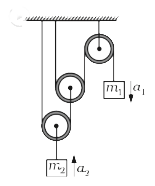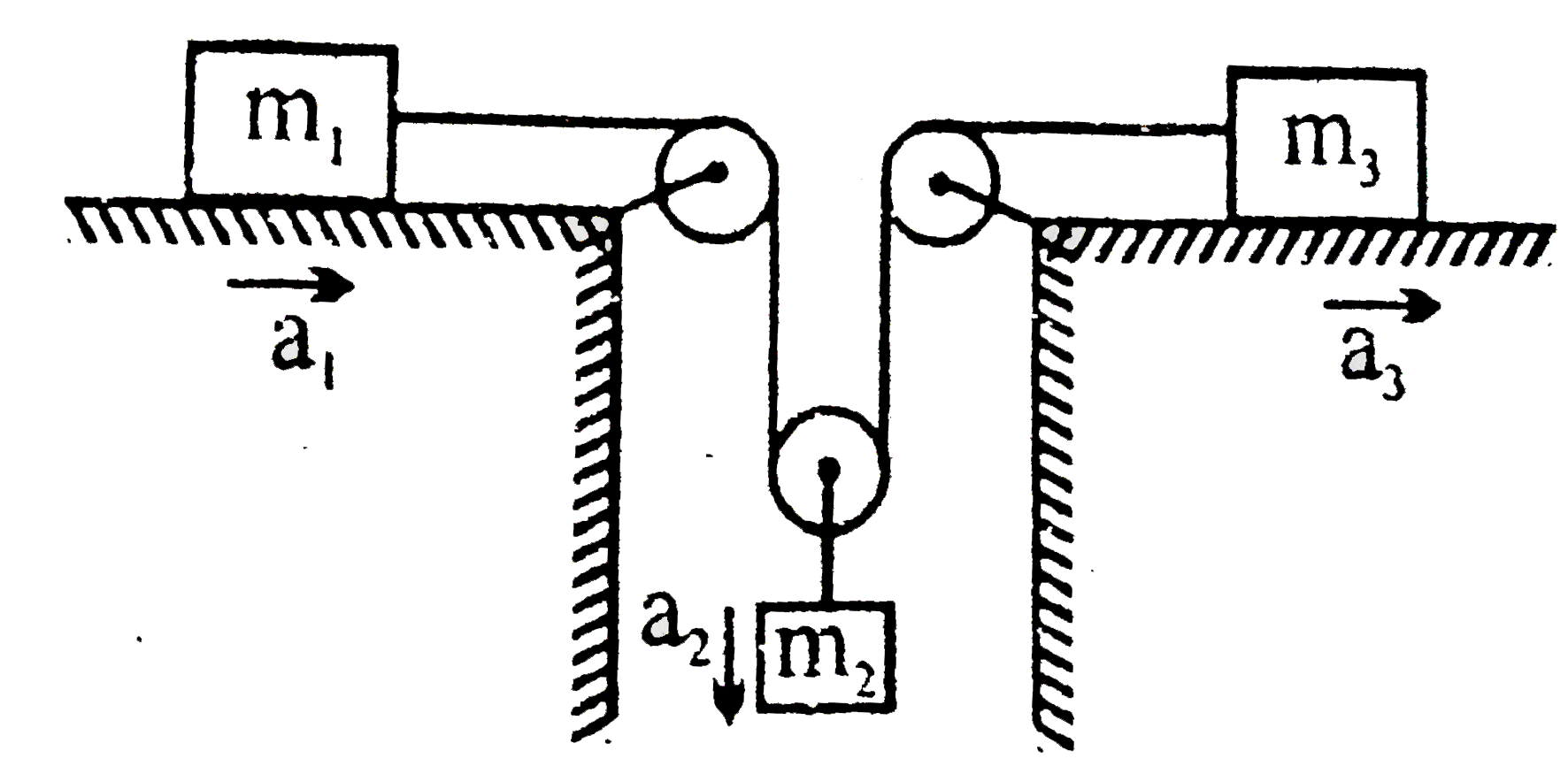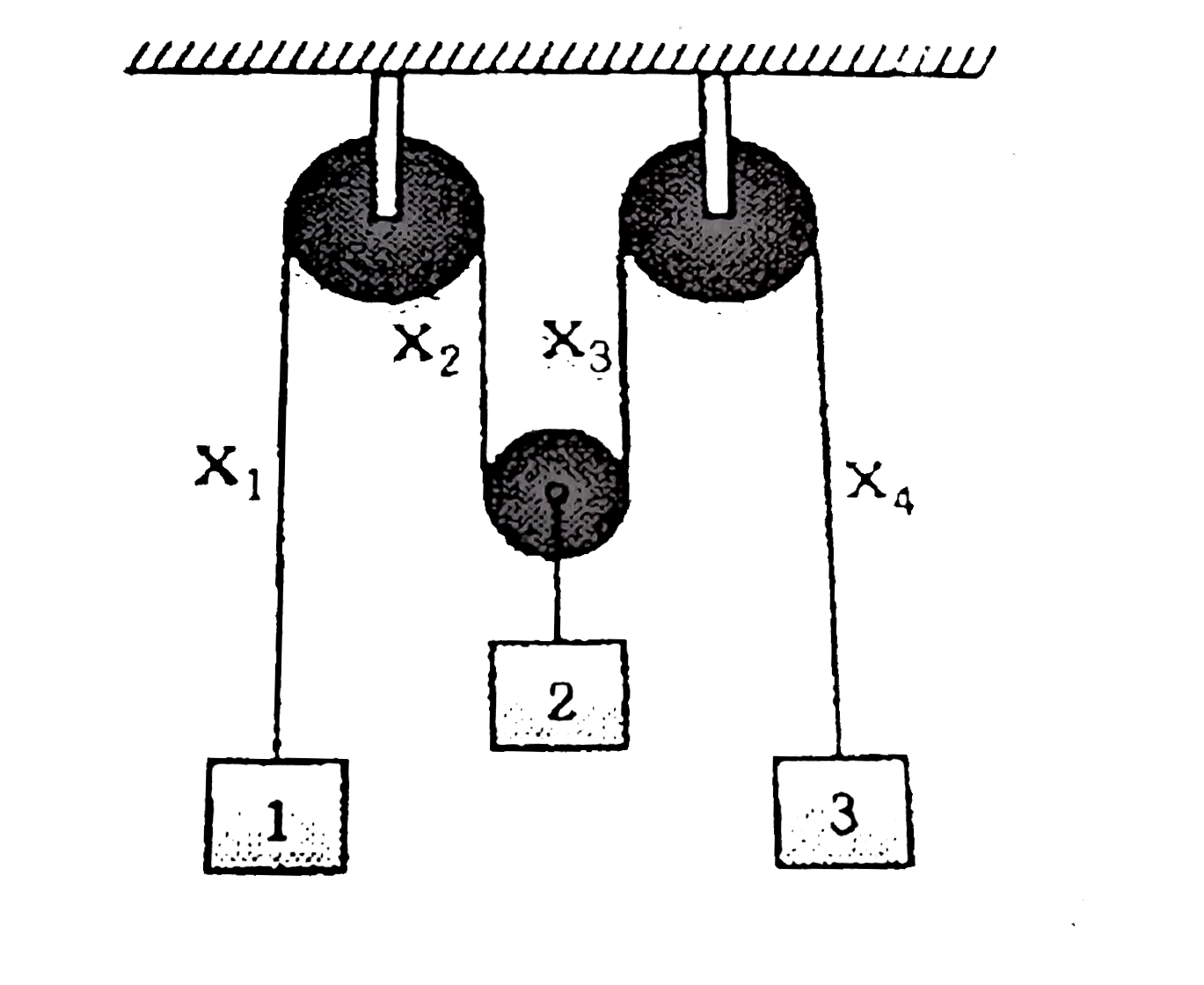Find the relation between acceleration of 1 and 2.
Video Solution
Text Solution
At any instant of time let x1 and x2 be the displacements of
1 and 2 from a fixed line. Then x1+x2=constant
Differentiating w.r.t. time, v1+v2=0
Again differentiating w.r.t. time a1+a2=0⇒a1=−a2
So acceleration of 1 and 2 are equal but in opposite directions.

|
Topper's Solved these Questions
- NEWTONS LAWS OF MOTIONBOOK - ALLENCHAPTER - NEWTONS LAWS OF MOTIONEXERCISE - SWOE
44 Videos
- NEWTONS LAWS OF MOTIONBOOK - ALLENCHAPTER - NEWTONS LAWS OF MOTIONEXERCISE - EXERCISE-I
52 Videos
- NEWTON'S LAWS OF MOTION & FRICTIONBOOK - ALLENCHAPTER - NEWTON'S LAWS OF MOTION & FRICTIONEXERCISE - EXERCISE (JA)
4 Videos
- RACEBOOK - ALLENCHAPTER - RACEEXERCISE - Basic Maths (Wave Motion & Dopplers Effect) (Stationary waves & doppler effect, beats)
25 Videos
Similar Questions
Knowledge Check
Find the relation between acceleration a1 and a2
 Aa1=2a2Ba1=4a2Ca1=a2Da1=3a2
Aa1=2a2Ba1=4a2Ca1=a2Da1=3a2In the pulley system shown here, find the relationship between acceleration of m1,m2 and m3
 A2a1+a3+a1=0B2a2−a3+a1=0C2a2+a3−a1=0D2a2−a3−a1=0
A2a1+a3+a1=0B2a2−a3+a1=0C2a2+a3−a1=0D2a2−a3−a1=0
In the Fig. shown find relation between acceleration of wedge 1 and 2

View SolutionFind the relation between acceleration of blocks a1,a2 and a3.

View SolutionFind the relation between acceleration of the two blocks m1andm2. Assume pulleys are massless and frictionless and the strings are inextensible .

View SolutionIn the pulley-block arrangement shown in figure , find the relation between acceleration of blocks A and B

View SolutionDerive the relation between acceleration, change in velocity and time.
View SolutionFig shown three identical cylinders, cylinders are released, find relation between acceleration of cylinders.

View Solution


